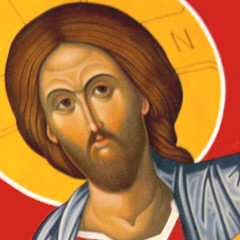During the Last Supper the disciple Philip asked Jesus show him God. “Lord,” he said, as recorded by John’s gospel, “show us the Father, and we shall be satisfied” (14.8).
Did Philip know what he was asking? Surely he was aware that Moses asked a similar question, to see God’s glory. “[Y]ou cannot see my face,” answered the Lord, “for man shall not see me and live” (Ex 33.20).
God allowed Moses a glimpse nonetheless, but not directly. Instead of seeing the Lord’s face, Moses was permitted a glance of his fleeting form as God passed in front of him — his afterglow, as I once heard it said.
No one has seen God
But, as the text plainly says, it was not a full revelation of the divine.
Moses’ theophany was a vision of God, who, in the words of fourth-century Spanish poet Prudentius, “qualifie[d] himself and put on the shape of an angel,” as all such divine encounters in the Hebrew scripture are understood. Direct view of God never occurred.
John reminds his readers of this at the beginning of his gospel. “No one has ever seen God,” he writes (1.18). And that includes Moses.
This is a significant theme for John; it’s a theme that runs through his book. In chapter 5, for instance, he reiterates the same point, this time quoting Jesus himself: “[God’s] voice you have never heard, his form you have never seen. . .” (v. 37). And again in chapter 6, Jesus says, “No one has seen the Father. . .” (v. 46).
So where does that leave Philip? Where does that leave us?
Measured in the heart
John draws us to contemplate the divine transcendence, the otherness of God. He is not like us. “God cannot be measured in the heart,” as Irenaeus of Lyons said, “and incomprehensible is He in the mind. . .” (Against Heresies 4.19.2).
To comprehend something means to know its limits, its boundaries — to measure it in the mind, as Irenaeus would say. Since God has no limits, he is unbounded and likewise incomprehensible. No one, in short, can see him.
“He is the Father,” wrote Prudentius in “whom no eye has ever had force to reach . . . and who does not put on the form of man nor qualify the infinity of his Godhead by assuming countenance or mode.”
The Father does not, but Christ, as the second person of the Trinity, does.
Known by love
God cannot be known in his glory, as Moses discovered, but he can be known through his love, and we encounter that love in Jesus Christ.
“[A]s regards His greatness, [God] is indeed unknown to all who have been made by him,” said Irenaeus, “but as regards His love, He is always known through Him by whose means He ordained all things. Now this is His Word, our Lord Jesus Christ. . .” (Against Heresies 4.20.4).
The theophanies of the Old Testament were glimpses of Christ through the guises of angels. But the Incarnation dispensed with the need for such guises. Christ emptied himself and took on human nature, fully sensible to us. Love bridged the chasm, and the transcendent became eminent.
Seeing God in Christ
Jesus himself hints at this in chapter 12 of John’s gospel.
“And he who sees me sees him who sent me,” says Jesus, though not identifying the sender. John gives us the answer in the rest of the quote. “I have come as light into the world, that whoever believes in me may not remain in darkness” (12.45-46).
The reference to the light takes us back to the first chapter of the gospel, the prologue that ties the Word and the Light to divine activity in the world. In other words, whoever has seen Jesus has seen God — which is exactly the answer Jesus gives Philip.
“Have I been with you so long, and yet you do not know me, Philip?” asks Jesus and then answers, “He who has seen me has seen the Father. . . ” (14.9).
We know the Father through Jesus. We see God in Christ.
“As regards His greatness . . . it is not possible to know God,” said Irenaeus, “but as regards his love . . . this is which leads us to God by His Word. . .” (Against Heresies 4.20.1).
“He is,” says Paul, using very visual vocabulary, “the image of the invisible God” (Col 1.15).
The king in a manger
This is how God does things, isn’t it? The little looms large. The small subversively becomes significant. The last leaps into first. The God of thunder speaks in a still, small voice.
“The prophets, when they appear on our earthly scene, are rarely as expected,” as Malcolm Muggeridge said in A Third Testament. “A king is awaited, and there is a birth in a manger.”
The Incarnation meant that humans could see God and could experience a genuine, saving experience of the divine. But not like we think. Philip, who had been with Jesus from the start, had been looking upon God all along. He just needed the faith to realize it. For him, just like us, Jesus is where we go to meet with God.













